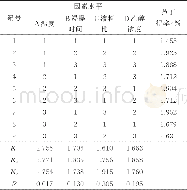《Table 4 Results from the tensile test of PLA and PLA/CNF composite nanofibers》
 提示:宽带有限、当前游客访问压缩模式
提示:宽带有限、当前游客访问压缩模式
本系列图表出处文件名:随高清版一同展现
《"Morphological, Mechanical and Thermal Properties of Poly(lactic acid)(PLA)/Cellulose Nanofibrils(CNF) Composites Nanofiber for Tissue Engineering"》
The stress-strain curves of the PLA and PLA/CNF composite nanofibers are shown in Fig.7.The values of the Young’s moduli,tensile strength and elongation at break obtained from these stress-strain curves are listed in Table 4.These results revealed that the neat PLA membrane had a Young’s moduli of 93.65 MPa,a tensile strength of 1.74 MPa and an elongation at break of 60.27%.With the incorporation of CNF,a distinctive increase of the Young’s moduli and tensile strength of all of the PLA/CNF composite nanofiber were observed.This may be attributed to the high inherent chain rigidity and stiffness of CNF,and the high crystallinity of PLA/CNF composite nanofiber.Moreover,it can also be seen that the value of Young’s moduli for PLA and PLA/CNF nanocomposite membranes were in the range of 63.51-106.96 MPa,which is similar to that of the human cancellous bones of 50-100 MPa[37].This suggests that both PLA and PLA/CNF composite nanofiber would be a potential scaffold in the cancellous bones tissue engineering field.Additionally,with the addition of CNF,the elongation at break of all of the PLA/CNF composite nanofiber decreased compared with that of the PLA fiber.This might be because the CNF particles dispersed in the PLA mixture and formed a discontinuous phase,which would generate weakness spots when the tensile test was carried out.
| 图表编号 | XD0043330000 严禁用于非法目的 |
|---|---|
| 绘制时间 | 2019.02.01 |
| 作者 | 杨章强、LI Xiaojie、司军辉、CUI Zhixiang、PENG Kaiping |
| 绘制单位 | School of Materials Science and Engineering, Fuzhou University、School of Materials Science and Engineering, Fujian University of Technology、Fujian Provincial Key Laboratory of Advanced Materials Processing and Application、School of Materials Science and E |
| 更多格式 | 高清、无水印(增值服务) |





